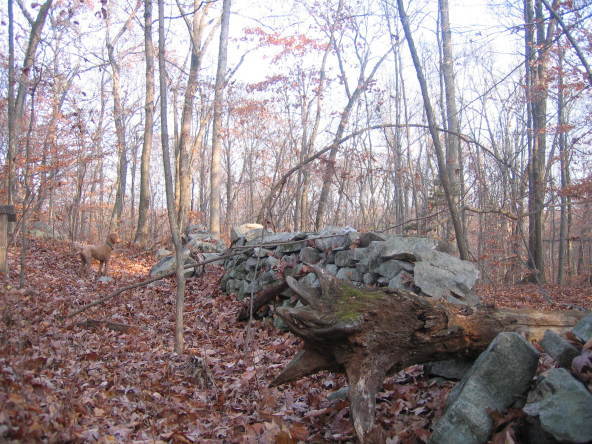A reposting from November, 2006
Stone walls are "newer" in New England than the early enclosures, which were made of wood. Split logs, like ol' Abe used to make, but not post-and-rail. They were the criss-cross leany sort which rested the rails on tilted posts. And to keep animals out of the cottage garden, they used paling fences.
But in post-glacial New England, where the fields seem to grow stones over the winter, you had to put the loose rocks somewhere, so why not make a wall?
It is hard to walk through any woodland south of Maine without stumbling across an 18th century wall, and sometimes you find an old apple tree in the corner, or an old apple-tree trunk. No doubt planted by the farmer for home-made cider, which was the only kind of booze the average Yankee farmer could afford.
This hilly, rocky woodland, as can easily be seen by the size and species of the trees in the photo, was pasture until about 40-50 years ago: it is a young beech and oak woodland, typical of acidic lowlands in New England, and well-past the point at which it is appealing to grouse and woodcock. Good for the wild turkeys, though.
The booming deer population, alas, vacuum-cleans the undergrowth, making it inhospitable for lots of small critters and birds: either we eat those deer or we return wolves and mountain lions to New England. (I'd vote for all of the above.)
These woods are dotted with low-lying vernal - and autumnal - pools, which are excellent for the toads, tree frogs, salamanders, Box Turtles, etc. "Wetlands," as some term them. I call them swamps, and I love them: they are a cradle of life.



